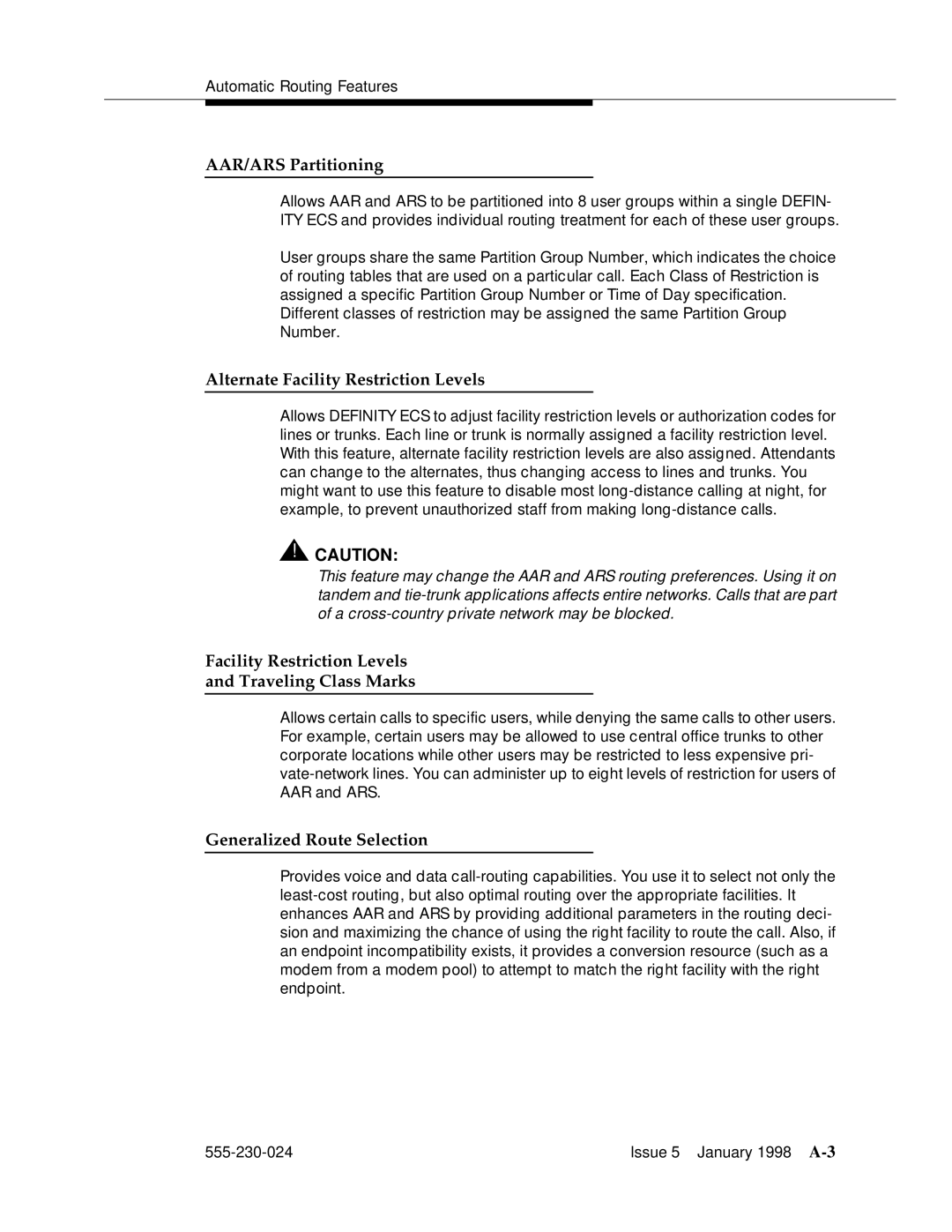
Automatic Routing Features
AAR/ARS Partitioning
Allows AAR and ARS to be partitioned into 8 user groups within a single DEFIN- ITY ECS and provides individual routing treatment for each of these user groups.
User groups share the same Partition Group Number, which indicates the choice of routing tables that are used on a particular call. Each Class of Restriction is assigned a specific Partition Group Number or Time of Day specification. Different classes of restriction may be assigned the same Partition Group Number.
Alternate Facility Restriction Levels
Allows DEFINITY ECS to adjust facility restriction levels or authorization codes for lines or trunks. Each line or trunk is normally assigned a facility restriction level. With this feature, alternate facility restriction levels are also assigned. Attendants can change to the alternates, thus changing access to lines and trunks. You might want to use this feature to disable most
![]() !
!![]() CAUTION:
CAUTION:
This feature may change the AAR and ARS routing preferences. Using it on tandem and
Facility Restriction Levels
and Traveling Class Marks
Allows certain calls to specific users, while denying the same calls to other users. For example, certain users may be allowed to use central office trunks to other corporate locations while other users may be restricted to less expensive pri-
Generalized Route Selection
Provides voice and data
Issue 5 January 1998 |
